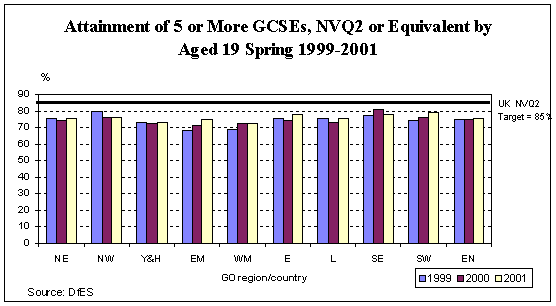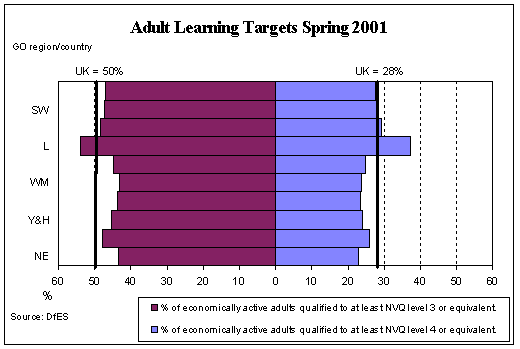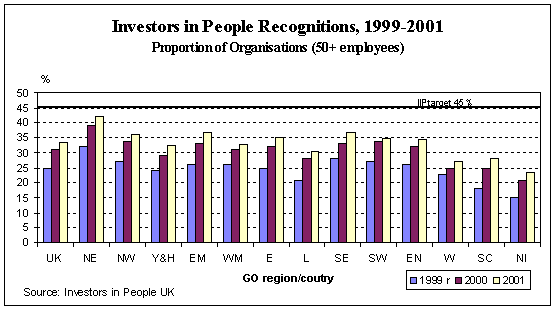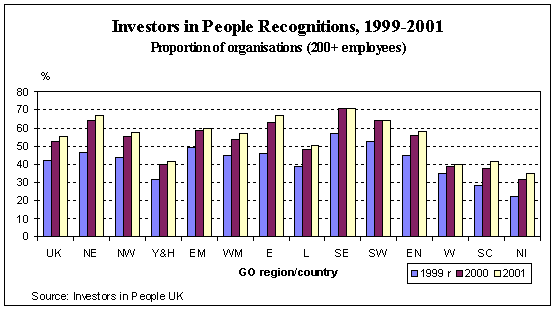Section
3: Education and Training
9. Educational and Vocational Attainment (England only) The
indicators included within this section relate
directly to three of the National Learning
Targets for England (see Definitions for a
full description of the five targets).
Chart 9a
 Tables 9(b) and 9(c) and Chart 9(b) give the proportions of economically active adults qualified to at least NVQ level 3 (national target 50%) or NVQ level 4 (target 28%). By Spring 2001, 54% of economically active adults in London were qualified to NVQ level 3, but no other region met the national target. The South East had slipped back from 50% to 48% since Autumn 2000, but in all regions the proportions qualified to level 3 has risen since Spring 1998. The
proportion of economically active adults in
London with qualifications to NVQ level 4 has
exceeded the national target consistently
since Winter 1997/98 and in Spring 2001
reached 37%. Also meeting or exceeding the
target were the South East (29%) and the South
West (28%). The overall figure for England in
spring 2001 was 27%.
Chart 9(b)

10.
Investors in People (IIP)
IIP requires employers to ensure that everyone working for them understands how their job contributes to what the organisation wants to achieve, receives the training and development required to help them perform even better, takes time to plan for the training and development of their staff, and measures the return on the investment in training and development. One of the national targets is for organisations and is that, by 2002, 45% of organisations with 50+ employees will be recognised as Investors in People, and 10,000 organisations with 10-49 employees will be recognised as Investors in People. Table 10 provides the proportion of organisations with 50+ and 200+ employees with Investors in People recognition. Overall, in the UK during March 2001, 33% of organisations with 50 or more employees had IIP recognition. In England, the North East had the highest proportion (42%), and London the lowest (30%). Northern Ireland (23%), Wales (27%) and Scotland (28%) all had smaller proportions of organisations who were IIP recognised, but they are not covered by the IIP target. It is clear that larger organisations are more likely to be recognised as Investors in People, with an overall recognition rate among those with 200 or more employees of 55%.
Chart 10(a)

Chart 10(b)

Home - Search - Site Map - Contact Us |